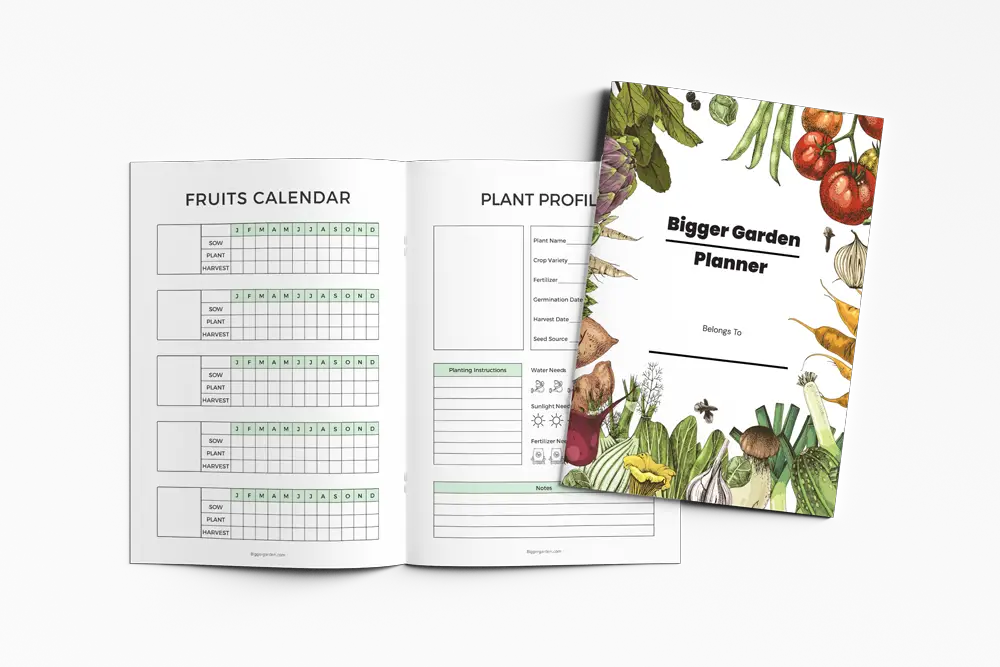11 Utterly Amazing Flowers That Start With U + Growing Guides

This post follows our research editorial guidelines.

Usher in the allure of the extraordinary as we embark on a floral odyssey, exploring 11 utterly amazing flowers that all start with the letter U. Are you ready to unravel the mysteries of the Urn Plant and its captivating elegance, or delve into the delicate charm of Uvularia, a flower that boasts both grace and beauty?
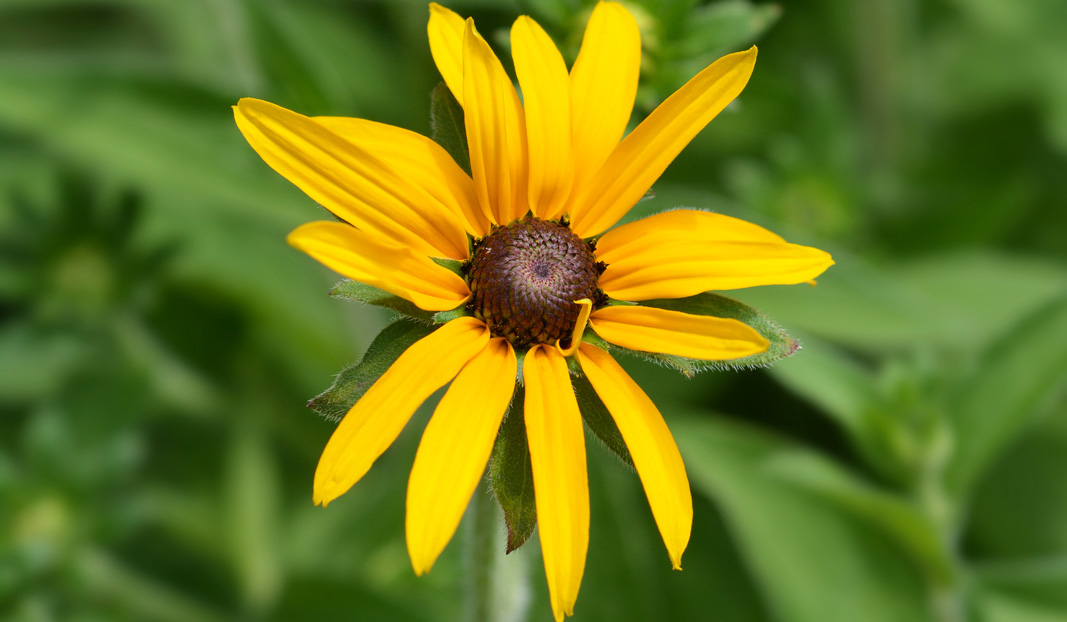
Join me as we navigate the enchanting world of flowers, where every petal tells a new story.
Quickly Find Flowers Starting With The Letter U
1. Urn Plant (Aechmea fasciata)
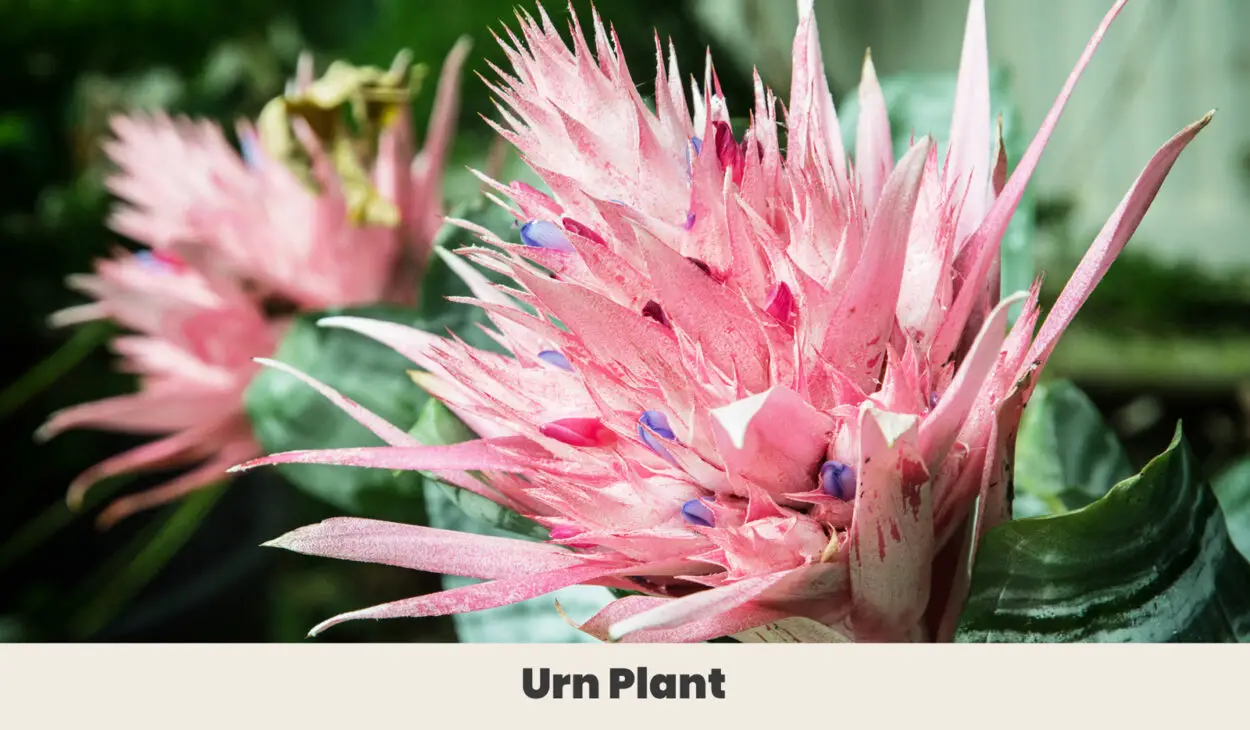
The Urn Plant is a captivating member of the bromeliad family, native to the rainforests of Brazil. It has a rich historical background intertwined with the indigenous cultures of South America.
The name of this plant derives from the urn-like shape formed by the tightly clustered rosette of leaves, which serves as a natural reservoir for collecting rainwater.
This feature helps the plant’s survival but also symbolizes resilience and adaptability.
| Botanical Name: | Aechmea fasciata |
| Growth Rate: | Slow |
| Native Range: | Brazil |
| Hardiness Zones: | 10-11 |
| Soil Needs: | Well-draining, acidic soil |
| Exposure: | Bright, indirect light |
| Blooming Period: | Spring to summer |
2. Uva Ursi (Arctostaphylos uva-ursi)
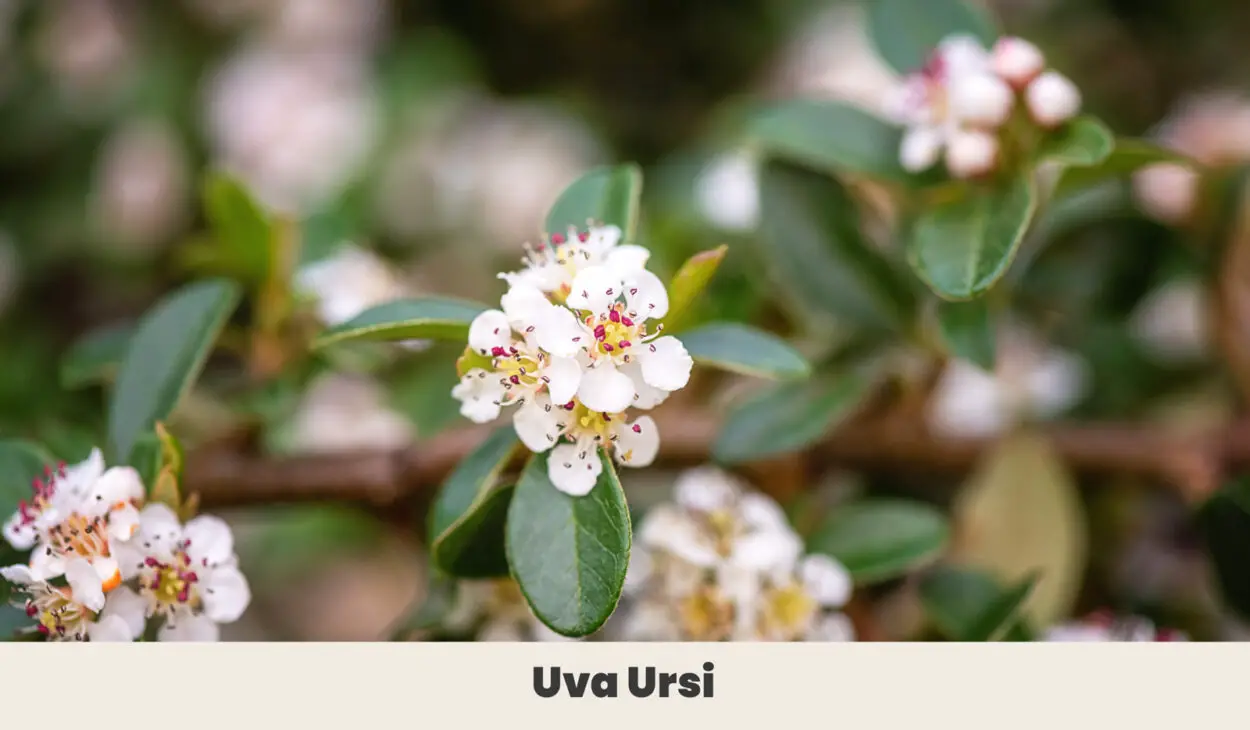
Uva Ursi, also known as Bearberry is a low-growing evergreen shrub that can be found in the Arctic, subarctic, and mountainous regions of Europe, Asia, and North America.
The plant’s name, derived from Latin, translates to “bear’s grape” because it prefers to grow in areas frequented by bears. A true treat of the forest.
| Botanical Name: | Arctostaphylos uva-ursi |
| Growth Rate: | Slow |
| Native Range: | Arctic, subarctic regions |
| Hardiness Zones: | 2-7 |
| Soil Needs: | Well-draining, acidic soil |
| Exposure: | Full sun to partial shade |
| Blooming Period: | Spring |
3. Umbrella Sedge (Cyperus)
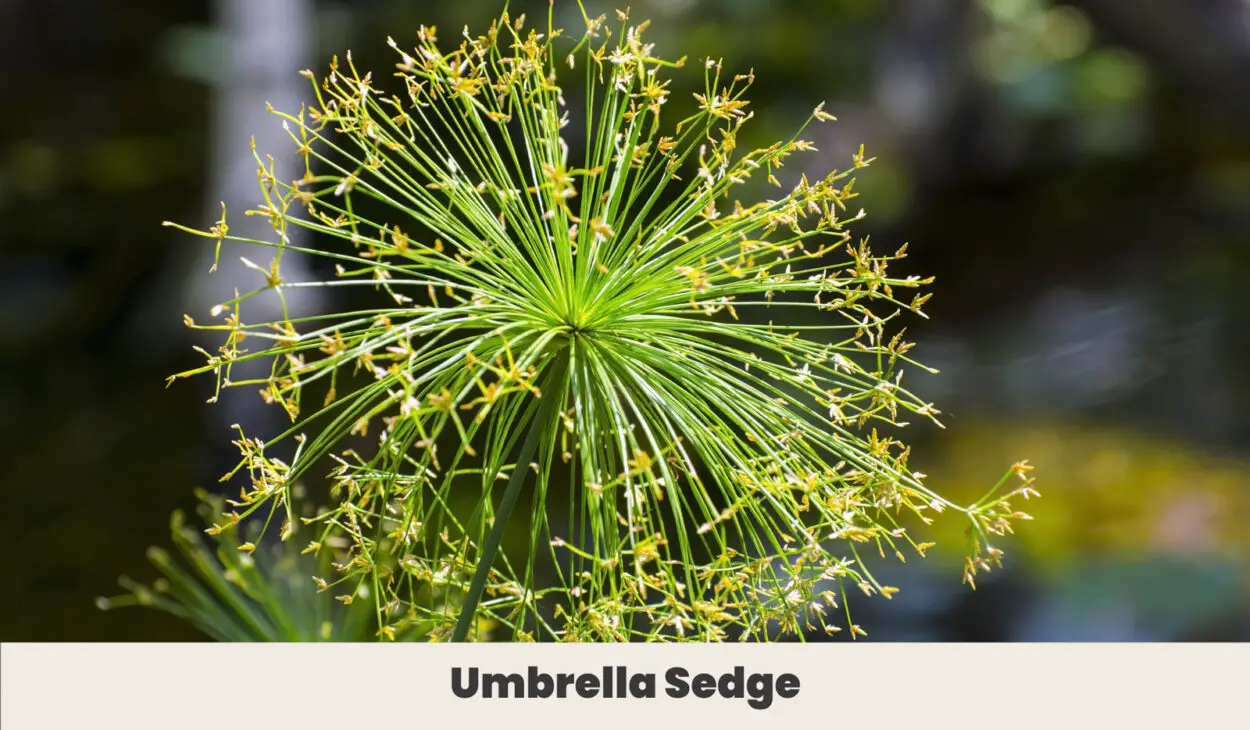
The Umbrella Sedge, a member of the Cyperaceae family, is a remarkable aquatic plant with a distinct appearance reminiscent of an umbrella.
It thrives in wetlands and marshy areas, with a wide range across various continents.
The plant’s umbrella-like arrangement of slender, triangular stems and long, grass-like leaves provides shade and shelter to aquatic organisms and represents protection and harmony in many cultures.
| Botanical Name: | Cyperus |
| Growth Rate: | Varies (some species grow fast, while others slow) |
| Native Range: | Worldwide distribution |
| Hardiness Zones: | Varies depending on the species |
| Soil Needs: | Moist, wet soil |
| Exposure: | Full sun to partial shade |
| Blooming Period: | Summer to fall (depending on species) |
4. Umbrella Plant (Darmera peltata)
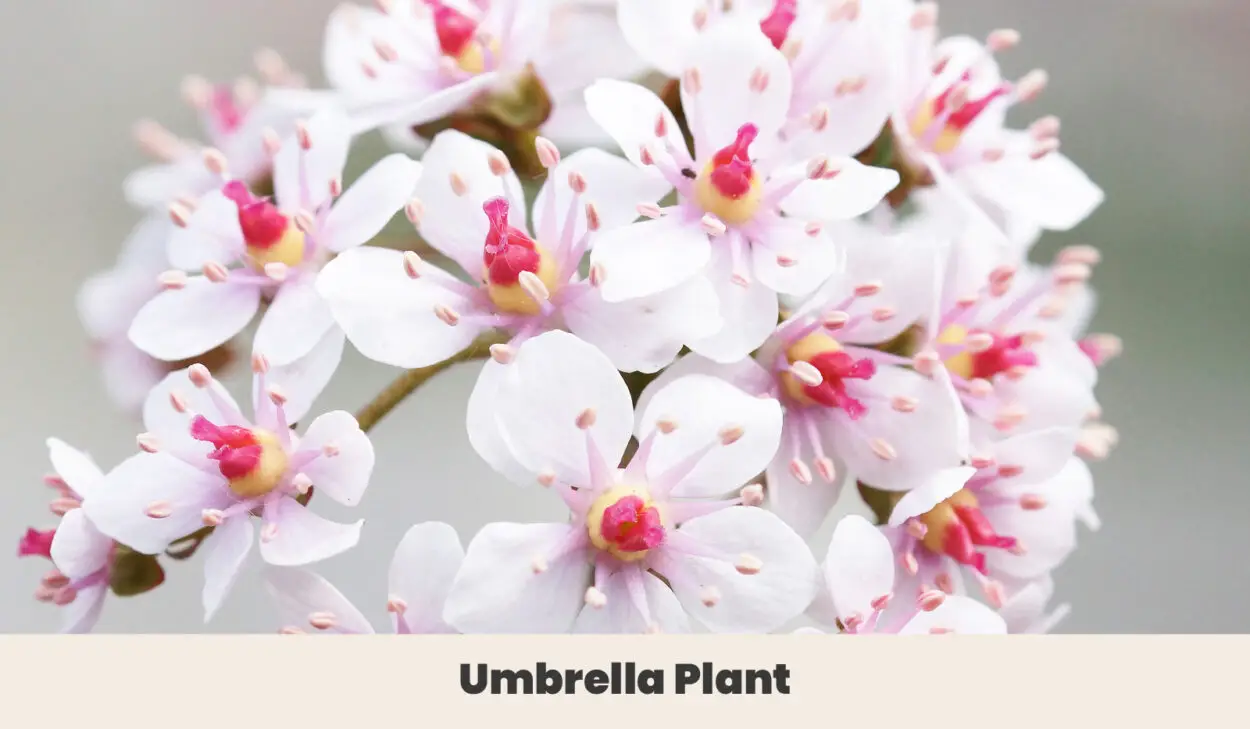
The Umbrella Plant, known as Indian rhubarb, boasts magnificent umbrella-shaped clusters of pink or white flowers held above large circular leaves.
Native to North America, this herbaceous perennial symbolizes resilience and strength because it can withstand diverse climates and thrive in moist woodland areas.
| Botanical Name: | Darmera peltata |
| Growth Rate: | Moderate |
| Native Range: | Western North America |
| Hardiness Zones: | 5-9 |
| Soil Needs: | Moist, rich soil |
| Exposure: | Partial shade to full shade |
| Propagation: | Division or seed |
| Blooming Period: | Spring |
5. Ulex (Ulex-Europaeus)
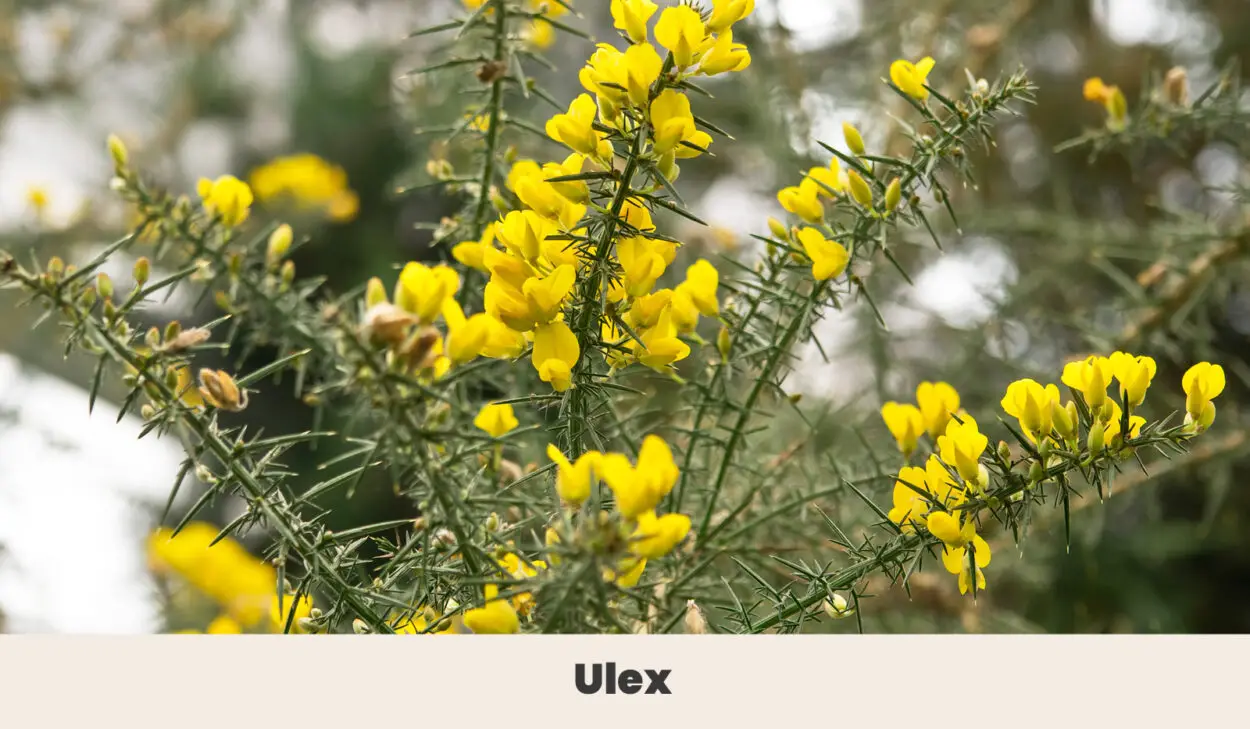
Ulex, or Gorse or Furze, is a vibrant and prickly evergreen shrub throughout Europe. The vivid yellow flowers of this plant bloom abundantly in the spring, creating a stunning spectacle across landscapes.
The plant is historically significant in Celtic mythology and represents renewal and protection. Ulex has thorns and fragrant blooms and is known to provide refuge to many animals in the wild, including nesting birds and small mammals.
| Botanical Name: | Ulex europaeus |
| Growth Rate: | Fast |
| Native Range: | Europe, North Africa, and Western Asia |
| Hardiness Zones: | 6-9 |
| Soil Needs: | Well-draining, poor soil |
| Exposure: | Full sun |
| Blooming Period: | Spring to summer |
6. Upright Clematis (Clematis recta)
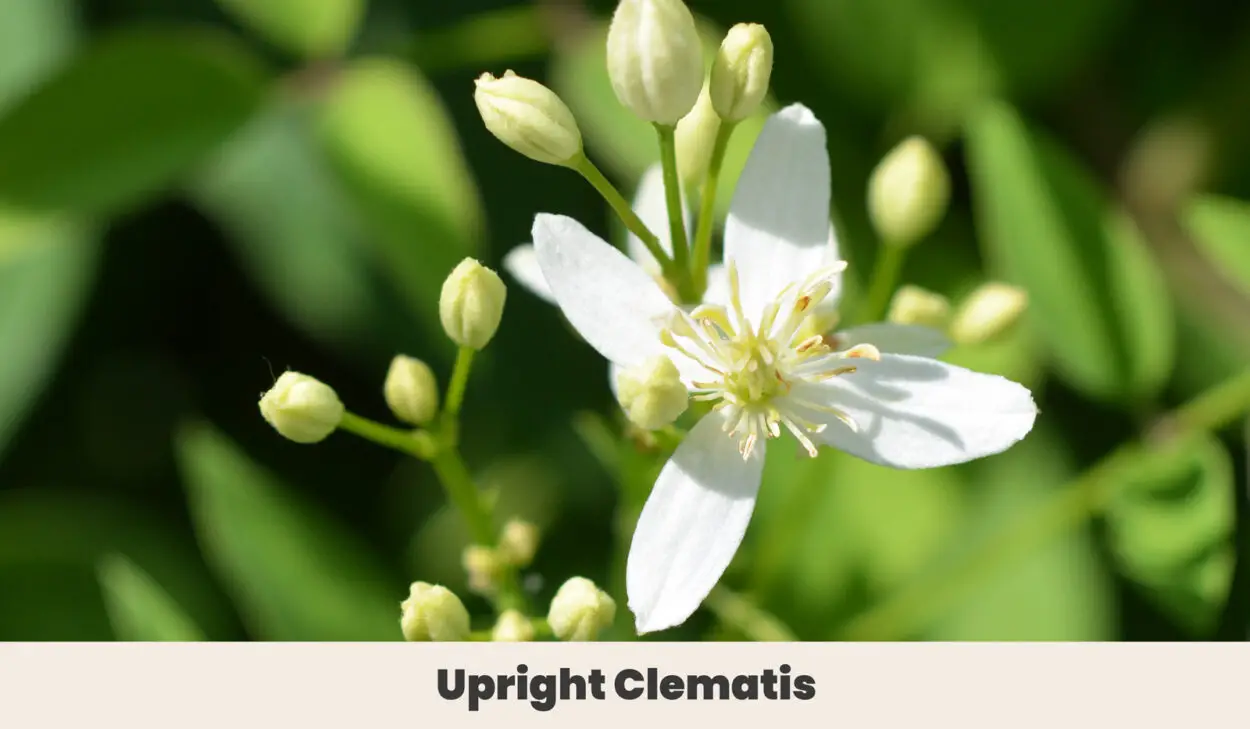
The Upright Clematis, a perennial flowering plant native to Europe and Asia, is tall and stunning with delicate white or pink blossoms.
It’s been cultivated for centuries and is honored in gardens worldwide.
The Upright Clematis symbolizes purity and beauty and has a rich history of cultural significance, often associated with love, creativity, and transformation.
| Botanical Name: | Clematis recta |
| Growth Rate: | Fast |
| Native Range: | Europe, Asia |
| Hardiness Zones: | 4-8 |
| Soil Needs: | Well-draining, fertile soil |
| Exposure: | Full sun to partial shade |
| Blooming Period: | Late spring to early summer |
7. Upright Yellow Wood Sorrel (Oxalis stricta)
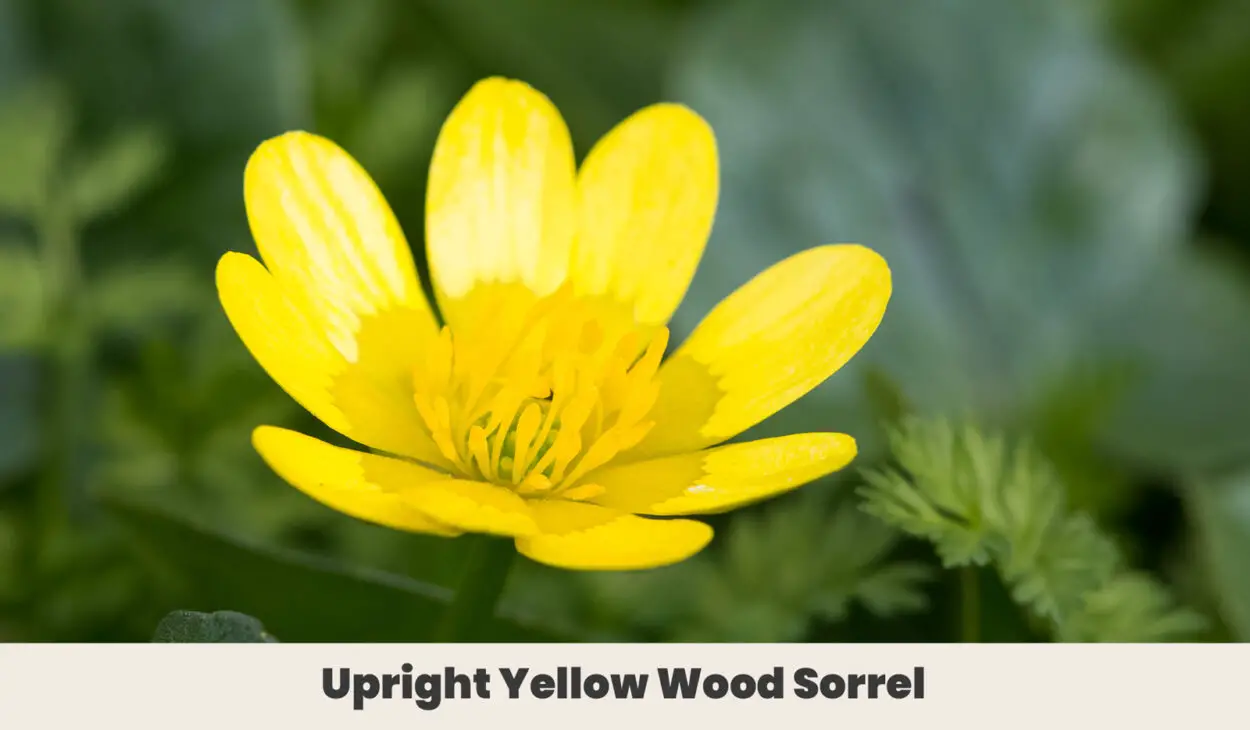
The Upright Yellow Wood Sorrel, or Common Yellow Woodsorrel, is a charming herbaceous plant in various habitats across North America. This plant’s delicate yellow flowers and trifoliate leaves add a touch of elegance to meadows and woodlands.
The plant’s vibrant color and clover-like leaves signify good luck and have been used in traditional medicine for their healing properties.
| Botanical Name: | Oxalis stricta |
| Growth Rate: | Fast |
| Native Range: | North America |
| Hardiness Zones: | 3-8 |
| Soil Needs: | Well-draining, fertile soil |
| Exposure: | Full sun to partial shade |
| Blooming Period: | Spring to summer |
8. Upjohn’s Coralroot (Corallorhiza upjohnii)
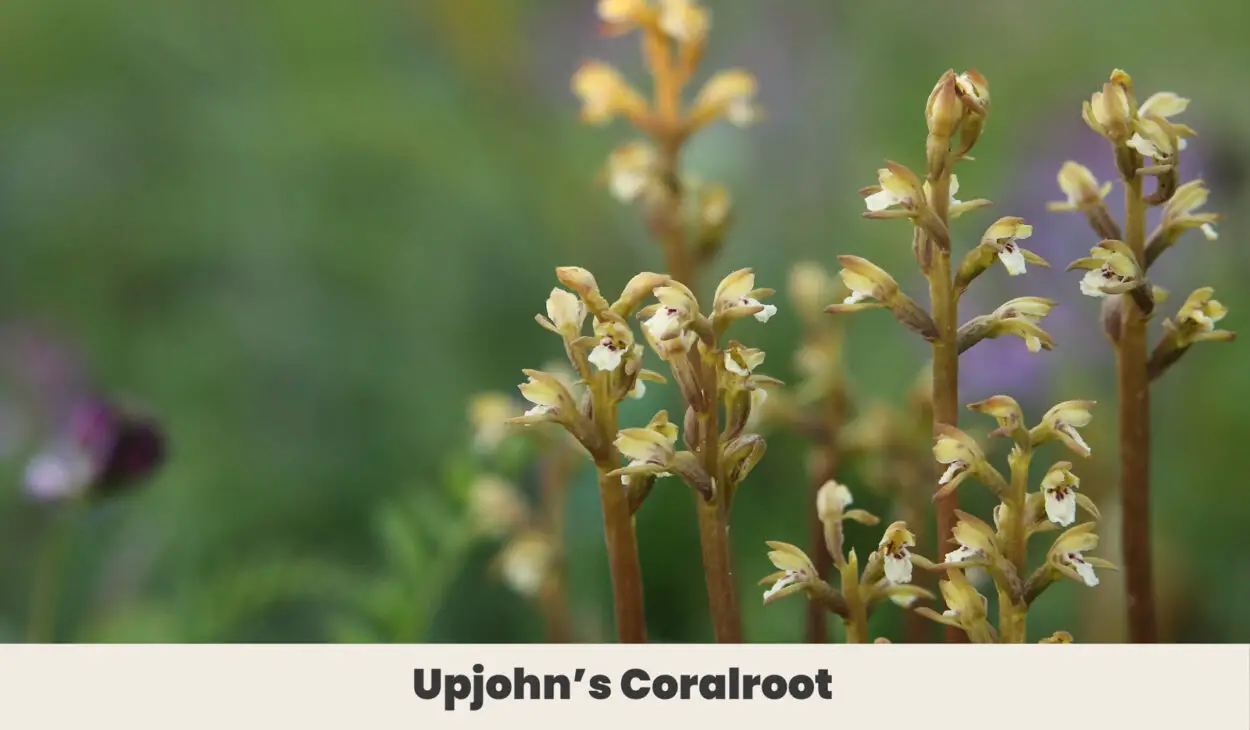
Upjohn’s Coralroot, named after the botanist William Henry Upjohn, is a fascinating orchid species in North America.
Unlike other orchids, it lacks chlorophyll and can’t produce energy via photosynthesis. Instead, it relies on a symbiotic relationship with fungi for survival.
This unique trait has made it a subject of scientific curiosity and admiration.
The plant’s delicate, coral-colored flowers emerging from the forest floor serve as a reminder of nature’s intricate interconnectedness and the beauty of hidden wonders.
| Botanical Name: | Corallorhiza upjohnii |
| Growth Rate: | Slow |
| Native Range: | North America |
| Hardiness Zones: | 3-9 |
| Soil Needs: | Well-draining, humus-rich soil |
| Exposure: | Partial shade to full shade |
| Blooming Period: | Late spring to early summer |
9. Uvularia (Uvularia grandiflora)
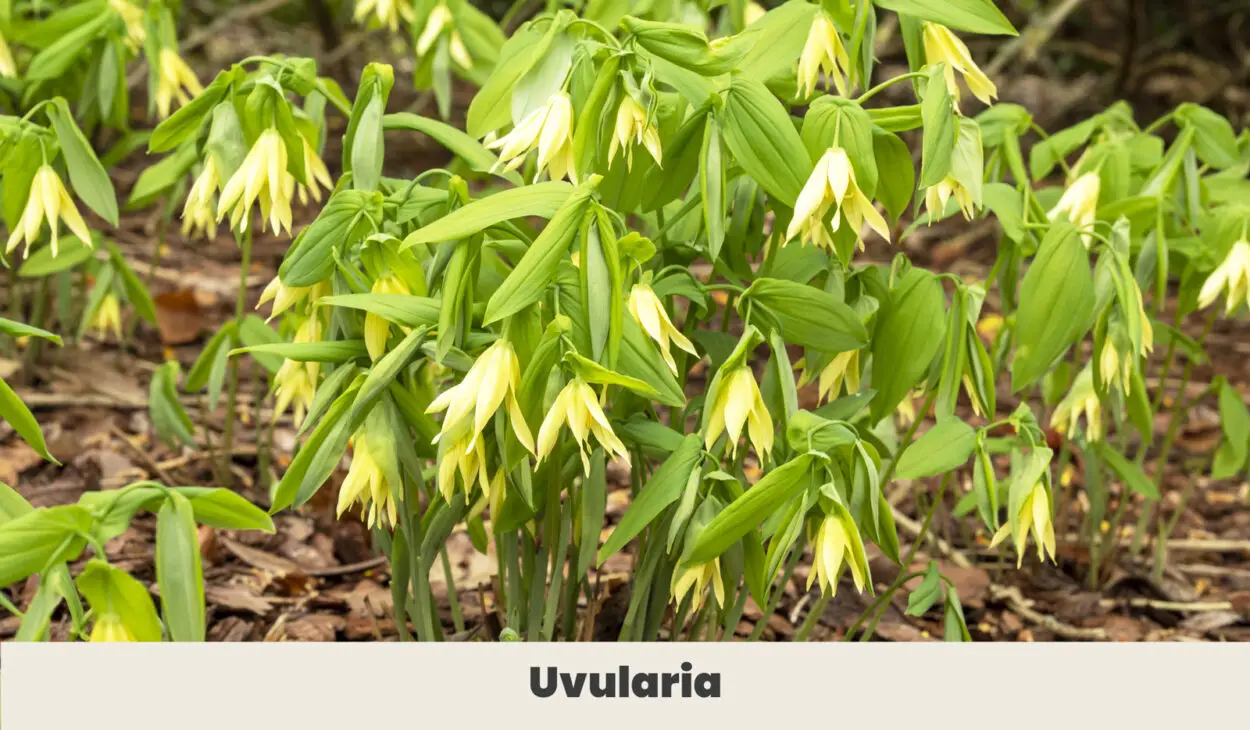
Uvularia, or Bellwort or Merrybells, is a graceful woodland perennial.
Native to North America and parts of Asia, this plant has bell-shaped flowers that dangle delicately from the slender stems. It’s often associated with enchantment and tranquility, while the blooms signify hope and new beginnings.
| Botanical Name: | Uvularia grandiflora |
| Growth Rate: | Moderate |
| Native Range: | North America |
| Hardiness Zones: | 4-9 |
| Soil Needs: | A moist, well-draining soil |
| Exposure: | Partial shade to full shade |
| Blooming Period: | Spring |
10. Upright Coneflower (Rudbeckia fulgida)
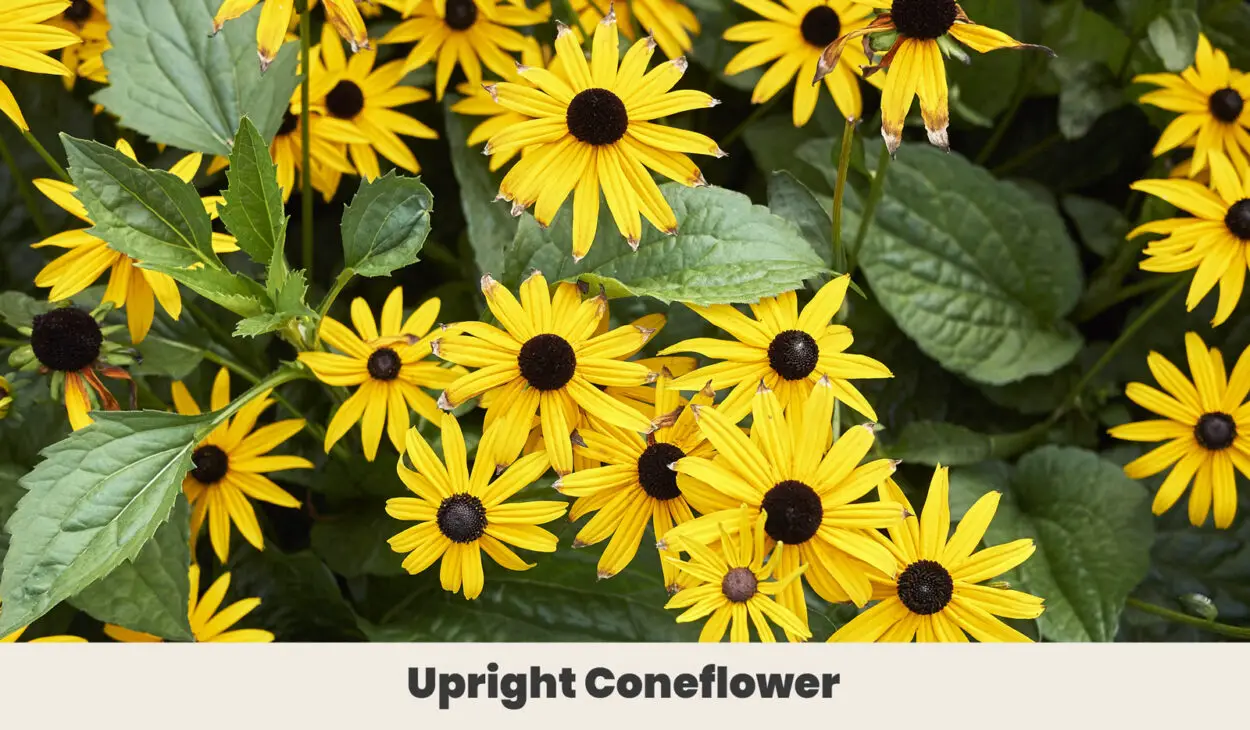
The Upright Coneflower, a native of North America, is a sturdy perennial with golden-yellow petals and dark brown cone-shaped centers.
This hardy and drought-tolerant plant has a rich history of traditional medicinal use by Native American tribes.
It symbolizes strength, endurance, and resilience, whereas the vibrant blooms attract pollinators and add color to gardens and meadows.
| Botanical Name: | Rudbeckia fulgida |
| Growth Rate: | Fast |
| Native Range: | North America |
| Hardiness Zones: | 4-9 |
| Soil Needs: | Well-draining, fertile soil |
| Exposure: | Full sun to partial shade |
| Blooming Period: | Summer to fall |
11. Unicorn Flower – Devil’s Claw (Proboscidea)
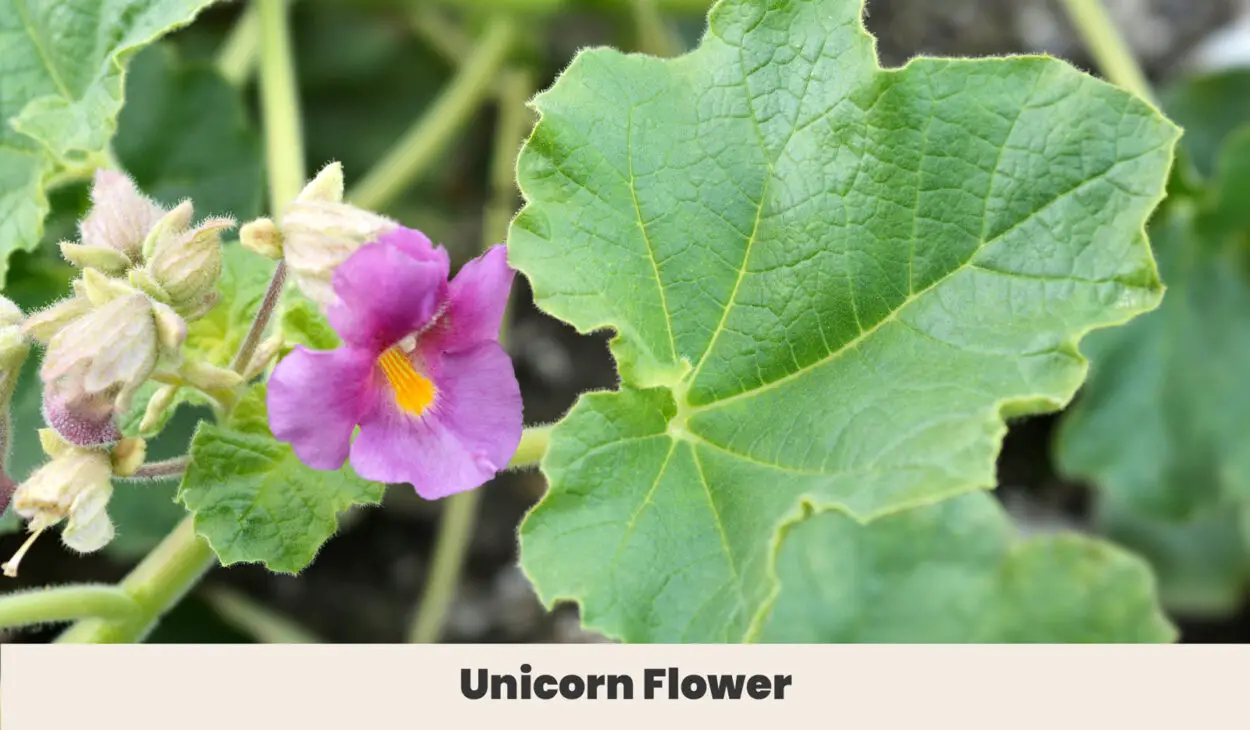
The Unicorn Flower, Devil’s Claw, is a unique desert plant with an excellent seed pod resembling a curved unicorn horn or a menacing claw.
Native to arid regions of North and Central America, this resilient plant is historically associated with mysticism and herbal remedies.
The plant’s distinctive pod, covered in hooked spines, protects itself from predators and is a source of intrigue and wonder.
| Botanical Name: | Proboscidea |
| Growth Rate: | Fast |
| Native Range: | North and Central America |
| Hardiness Zones: | 9-11 |
| Soil Needs: | Well-draining, sandy soil |
| Exposure: | Full sun |
| Blooming Period: | Summer to fall |
Final Thoughts
As we conclude our exploration of these utterly amazing flowers that start with U, we hope you have discovered a newfound appreciation for the extraordinary diversity within the botanical world.
By following the provided growing guides, you can now begin cultivating these exceptional blooms and witnessing their stunning beauty firsthand.
Let your garden be transformed into a sanctuary of awe-inspiring flora as you embrace the wonders of these remarkable flowers.
Happy gardening!
